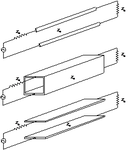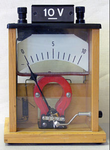unlucky
Newbie level 5

- Joined
- Jul 11, 2013
- Messages
- 8
- Helped
- 1
- Reputation
- 2
- Reaction score
- 1
- Trophy points
- 3
- Location
- Hillsboro Beach, FL
- Activity points
- 81
I am just beginning and required to learn something on waveguides. Can someone tell me what these 3 types of waveguides are? Is one of them 'rectangular'? After knowing this, I will hope to be able to describe the differences between these 3 transmission means in terms of the frequency response, from zero to infinity.


Last edited:




